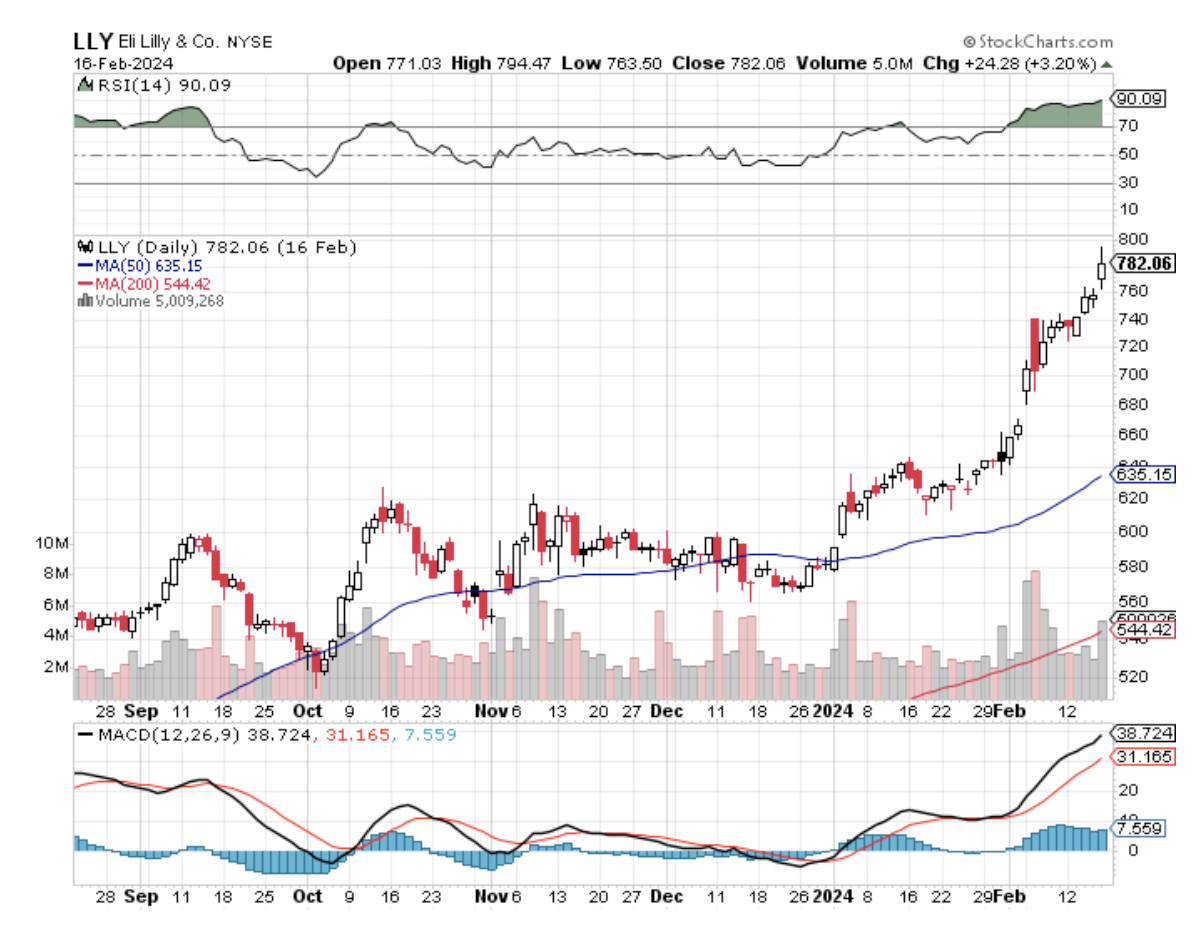In the biotechnology and healthcare industry, reaching a $1 trillion market cap is akin to scaling Mount Everest without oxygen. Yet, Eli Lilly (LLY) has emerged as an unexpected contender, catching the investing world’s attention by not just climbing the mountain but being on the verge of planting its flag at the summit.
A year ago, if you'd whispered in my ear that Eli Lilly's stock was about to skyrocket nearly 140%, I might have choked on my coffee. But here we are, and the buzz isn't just about the rocket ride — it's whether Eli Lilly can be the first biopharma behemoth to hit the $1 trillion market cap. Wild, right?
So, what's cooking at Eli Lilly that's got everyone so revved up? Well, they've got a couple of aces up their sleeve.
Sure, they've been making waves with Verzenio for breast cancer and Jardiance for diabetes, but the real game-changer? Tirzepatide, sold under their brand name Mounjaro for type 2 diabetes and is now strutting the stage as Zepbound for weight loss. This isn't just any old drug; it's the blockbuster that's got everyone from Wall Street to Main Street talking.
But what makes tirzepatide so darn special? It's the first of its kind, a dual GLP-1/GIP agonist, making it a heavyweight champion in the fight against obesity. With sales already blasting past the $5 billion mark in record time, it's like watching a rocket take off without any signs of slowing down.
Now, I know what you're thinking. "But hey, aren't there other big fish in the sea?" Sure, Johnson & Johnson (JNJ), Pfizer (PFE), and Merck (MRK) are doing their thing, but next to Eli Lilly's recent performance, they're looking a bit like they're running in slow motion.
And while Novo Nordisk (NVO) has been gaining traction in the diabetes market with its own version of the treatment, Eli Lilly’s tirzepatide is in a league of its own. In fact, this drug is projected to become the top-selling treatment in history, with the potential to rake in sales north of $25 billion.
For context, AbbVie (ABBV) Humira had an annual record of $21.2 billion, and that’s already the recorded highest-selling therapy in history. But, the road to hitting these goals demands many more new indications.
That’s why it comes as no surprise that tirzepatide is eyeing a new target: metabolic dysfunction-associated steatohepatitis, or MASH for short. It's a fancy way of saying "a really bad liver problem," and it's a growing issue globally.
Beyond tirzepatide, Eli Lilly's expanding in a few other markets. Alzheimer's, for one, where their potential therapy, donanemab, is making waves and presents a potential competitor to Biogen’s (BIIB) Leqembi.
And let's not overlook their recent wins with cancer medicine Jaypirca and ulcerative colitis therapy Omvoh. It's like Eli Lilly's hitting bingo on every card.
With all these in mind, can Eli Lilly truly reach that $1 trillion valuation? With their current market cap already north of $715 billion, it looks like the company is ready to take home the title. Assuming a modest compound annual growth rate of about 7%, that trillion-dollar dream could become reality quicker than you can say "biopharma giant."
As investors, industry watchers, and, frankly, anyone with a pulse on the future of medicine keep their eyes glued to this unfolding story, the message is clear: Eli Lilly is not just about the numbers. It's about setting new benchmarks, pushing boundaries, and cashing in on cures in the most spectacular way possible.
So, if you're wondering where the smart money is heading in the biotechnology arena, following Eli Lilly's trail might just lead you to a treasure trove of opportunities. I suggest you buy the dip.

